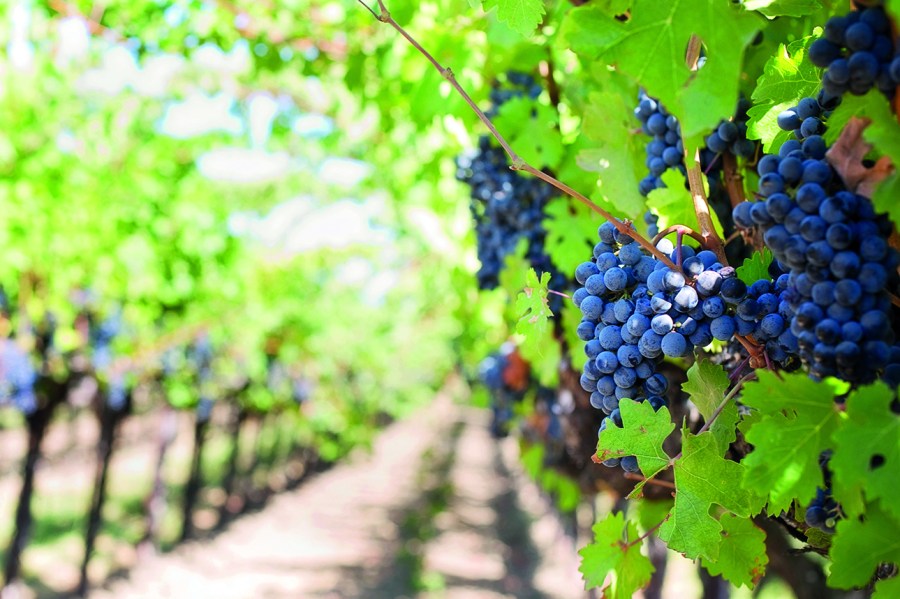Elicitor products offer a useful addition to late season disease control programmes, when traditional fungicide options can be limited by strict harvest intervals. Hutchinsons agronomist Rob Saunders explains.
Controlling key foliar diseases like Powdery and Downy mildew during late summer into early autumn is often made more challenging given the various label restrictions on final fungicide applications before harvest.
Depending on the product, harvest intervals are usually at least 21 days to one month, but can be up to 63 days for those containing mancozeb. This potentially leaves vines exposed to disease infection during that period, a situation that is easily compounded if weather favours disease build-up, or if canopies are too dense, and/ or ripening and picking is delayed. Once defoliation occurs, vines lose the ability to convert sunlight into sugar, jeopardising quality and the ability of vines to lay down reserves for next season.
It is during this period when there is little or no cover from traditional fungicides that elicitor products, such as Fytosave, could offer a significant advantage to growers. With no residues or lengthy harvest intervals, they provide a low-risk way of protecting crops in conventional and organic systems.
Preventative action
Elicitors are based on components that essentially mimic microbial attack (e.g. by a Powdery mildew pathogen) when they are detected by receptors in the plant cells, tricking vines into activating various natural disease defence mechanisms.
Fytosave for example, uses two naturally occurring complex carbohydrates called COS (Chito-oligosaccharides) and OGA (Oligo-galacturonans). These provide a double alarm signal to stimulate the plant’s defence mechanisms.
COS is detected by cell membrane receptors as a “foreign” molecule from a pathogen, while OGA is detected as coming from damage to the plant’s own cell walls. The double biochemical alarm works quickly (within 30 minutes of application) and spreads systematically around the plant, activating three main responses:
1. Thickening cell walls by depositing more cellulose and lignin, thereby providing a physical barrier to disease attack
2. Increasing peroxidase production to generate oxidising chemicals that are toxic to attacking fungi
3. Increasing salicylic acid production to manufacture more anti-fungal toxins.
Because of this action, elicitors must be used preventatively, before any disease symptoms are visible. They do not have a direct effect on plant pathogens, so are not something growers can turn to where curative action is required to tackle disease already present.
The recommended approach is to begin using elicitors earlier in the season, around pre-flowering, however the natural defence process can be initiated at any point in the growing season, providing no disease is present.
It typically takes three initial applications to fully build up the plant’s defence mechanisms with a product like Fytosave, so depending on disease pressure, it may be necessary to support the elicitor with conventional fungicide chemistry to prevent mildew coming in during this “build-up” period.
Once natural protection has been established, it should be maintained with regular follow-up applications throughout the remainder of the season up to harvest. Treatment intervals are typically every 7-10 days, although this varies according to the product and disease pressure. Always check the recommended intervals between applications and maximum number of treatments allowed on the label.
In very high disease pressure situations it may be necessary to again support elicitors with conventional fungicides, and generally there is good tank mix compatibility with the main options to allow this.
Managing resistance
The benefits of an integrated approach such as this can be two-way, as elicitors help reduce the disease pressure that traditional fungicides are exposed to. However, because they do not act directly on the pathogen, they are not subject to the same resistance risks as that chemistry, therefore provide a useful resistance management strategy.
With the important multisite mancozeb being lost from the armoury and metalaxyl resistance becoming more widespread within UK vineyards, growers must support and protect remaining chemistry, so elicitors could be a useful addition to foliar disease programmes, this season and next.




